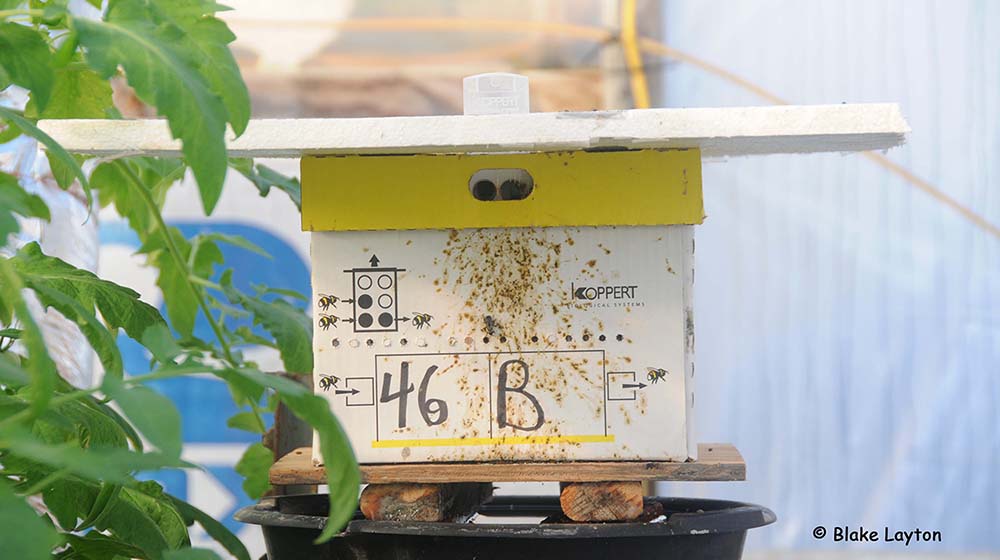Bumble Bee Hive, No. 30
Related News
June 4, 2015
May 19, 2015
May 15, 2015
May 5, 2015

Order: Hymenoptera
Family: Bombidae
Bumble bees have become the favored method of pollinating greenhouse grown tomatoes and other greenhouse crops that require pollination. Although field grown tomatoes are pollinated by wind, tomatoes growing in greenhouses, where there is no wind, must be specially pollinated in order to obtain optimum fruit set and size. Historically, growers pollinated by hand, either by using a special pollination wand to vibrate individual bloom clusters or by using an electric leaf blower. But hand pollination is a tedious and time-consuming chore that most growers prefer to avoid if possible, and over the past few decades bumble bees have gradually replaced hand pollination in many greenhouses.
Several commercial companies sell bumble bee hives for use in greenhouses, and even for pollinating some field grown crops. The common eastern bumble bee, Bombus impatiens, is the species used in most US crops. In greenhouse settings, bumble bees have several advantages over honeybees. Bumble bees perform much better in small spaces and bumble bee hives contain a lot fewer bees. This allows greenhouse growers to choose sizes and numbers of hives that best fit the size of their greenhouses. Also, bumble bees actively pollinate blooms using a method referred to as “buzz pollination.” They grasp the flower cone with their mandibles and vibrate their wing muscles, causing pollen to be released from the anthers. Growers can check to be sure flowers are getting pollinated by examining closed blooms for bruising or bite marks.
When it is necessary to apply pesticides that might be harmful to the bees, growers are able to close hives and remove them from the house. Of course, wild bumble bees are not active during the winter months, when most greenhouse tomato crops are in production. Commercial hives placed in greenhouses do not overwinter, but they do have a limited life span. Depending on size of hive purchased, commercial bumble bee hives remain active from 8 to 12 weeks before their numbers dwindle to the point they are no longer effective. To ensure constant pollination, growers usually order and install a new hive a few weeks before they anticipate this decline.
Blake Layton, Extension Entomology Specialist, Mississippi State University Extension Service.
The information given here is for educational purposes only. Always read and follow current label directions. Specific commercial products are mentioned as examples only and reference to specific products or trade names is made with the understanding that no discrimination is intended to other products that may also be suitable and appropriately labeled.